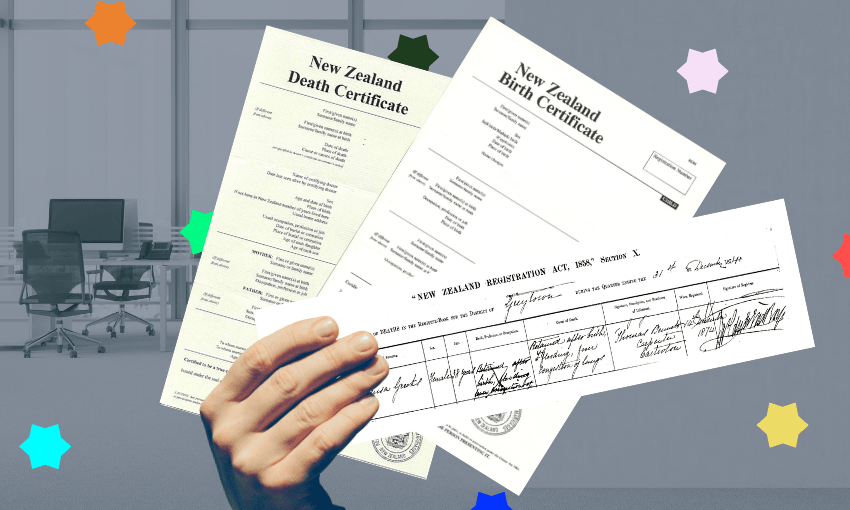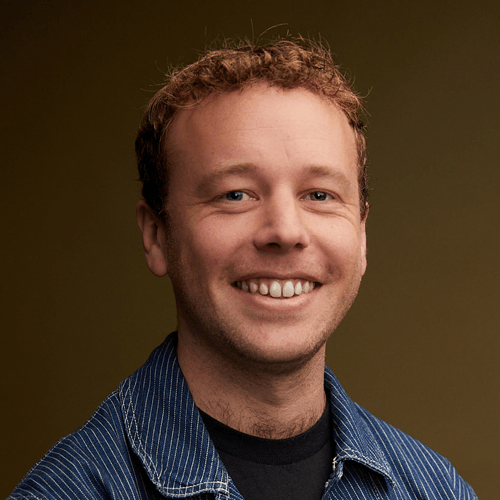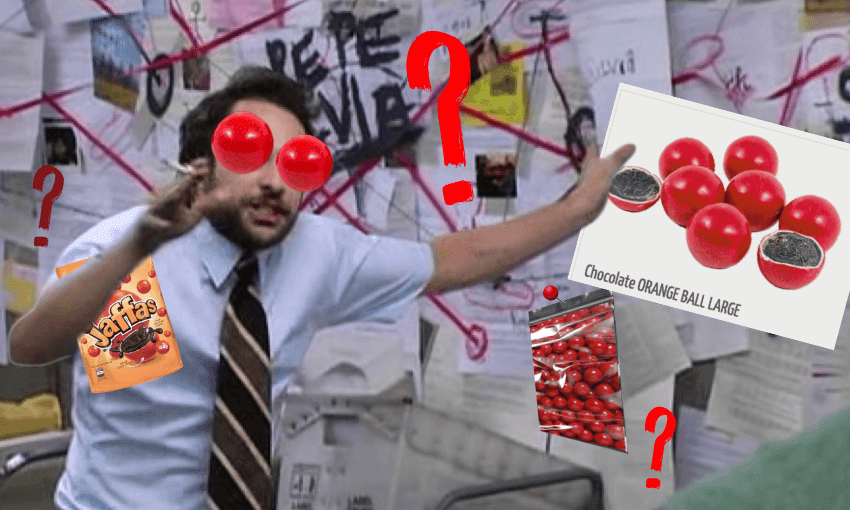Work stories from the office of births, deaths and marriages.
On a grey Wellington day, there’s a grey Wellington street, and on that street there’s a grey, medium sized building. Hanging outside this building is a small sign with the vaguest of governmental names. The Department of Internal Affairs. Through the automatic doors, across a bright foyer and up a grey lift, there’s a grey office.
Many years ago I worked there in a small team known as births, deaths and marriages, or as it was affectionately called, hatch, match and dispatch. Myself and a few others issued birth, death and marriage certificates. The process was mostly automated, but there were enough unique cases to justify a team of us parsing through requests and figuring out what was going on. It was a combination of data-entry, customer service and detective work.
On an individual level these certificates are necessary to get a passport, enrol your kids in school, open a bank account, vote in an election or learn your great grandparents’ middle names. At a national level, life event data guides policy, informs public health decisions and tracks demographic shifts.
The head of BDM has the old-timey job title of Registrar-General. Previous Registrar-General Jeff Montgomery stepped down in 2023 after 10 years in the role. One time when he visited our office, he told me there were official robes for the role that are kept at Te Papa. I asked if he had ever tried them on and he said only once, when he first got the job. He may have even mentioned a ceremonial mace. While writing this piece, I asked Jeff about the robes and he told me that he had been joking.
When he wasn’t keeping a straight face, Jeff oversaw all life event registrations, including being the final arbiter on what you could name your baby. As I came to learn, every field on these certificates is contested in some way or another.
Names can’t resemble a title or rank, can’t be swears or include numbers, and can’t ridicule the child. A name has to be around 100 characters or less, but you can change your name as many times as you like. There was a rastafarian-adjacent religion in the bush somewhere that encouraged their followers to regularly change their names to long, pious strings of words. All name changes are recorded on your birth certificate, and it was an exciting day when I got to issue a two-page certificate.
Unlike the days when a leak in the roof or a fire in a local archive could wipe out decades of paper records, the modern system of recording life events in New Zealand has a near 100% coverage. After stepping down, Jeff moved to Fiji to work on registrations in the Pacific. “About 50% of births and 80% of deaths in the Pacific still go unrecorded.” Jeff says. “with considerable variation across the region – from some countries with 100% coverage, to others below 20%.”
He’s working with governments and organisations to move “towards every Pacific Islander having the official recognition they deserve, from birth to death, which really means the chance to fully participate in their societies.”
Records in the New Zealand system go right back to 1840 and while historic personal details were interesting, the attitudes recorded on old records were just as eye-opening. I’d often come across Māori men and women in their 70s with their names registered as “Boy” or “Girl”. At various points, government workers had been sent out to rural areas to register births, but had prioritised speed over recording the child’s name.
Sometimes the details omitted are shocking, other times it’s what is included. Horrible words I had to look up to fully understand. Retarded, cripple, mongoloid. From 1912 it became law to record the “Degree of Māori blood” on birth and death records, which then became standard for over 50 years. The phrases they used were Full Māori or Half-Caste.
On a birth certificate, the field for “parents” is another battleground. The adoptions team sat around the corner from me, and I’d often see redacted details on birth certificates. For closed adoptions before March 1986, birth parents can decide whether or not their details remain hidden on their child’s birth record. The info can stay hidden for up to 10 years, then the birth parents are able to call and renew (known as “endorsing”) the block for another decade.
A colleague told me that for one closed adoption, the restrictions on the parents’ details were due to expire that day (after a 10-year block). The birth parents had called that morning to keep their details hidden, just ahead of their child, who had called in the afternoon to ask who his parents were. The calls were only a few hours apart.
Wading through the records revealed the complexity of people’s lives. Common historic scenarios were well known in the office. For example, when a young woman got pregnant but wasn’t married she would sometimes be hidden away by her family. They might have said she was sick for a year, or away visiting relatives. Then her parents would announce a surprise baby of their own. Whoops! But in reality, their new child was their grandson. Many decades go past and that child applies for a birth certificate. The system can’t automatically find the record with the details they’ve provided, so it would be bumped to me to figure out what was going on.
In one case, after some searching, I confirmed with my boss that there was an application for a certificate where the customer had put down his grandparents as his parents. “So what happens now?” I asked. “This is how he finds out,” he told me. So I gave him a call.
In my best phone voice I let the customer know that I couldn’t find any birth certificates with the details he supplied.
“Oh yea.”
Are there any other details they could be under?
“Nah.”
Is there a chance your sister could have been your mother?
“Yea could have been.”
Let me take a look (fake typing in the background to make it sound like I was searching). Oh yea there’s a record here, looks like your sister is your birth mother.
“Oh yea.”
I’ll send this birth certificate out to you now then
“OK.”
Anything else I can help you with?
“No thanks, bye.”
He didn’t sound surprised, but clearly was not a man of many words. Maybe he always knew. Or maybe it was the kind of all hands on deck family where it just didn’t matter (I could see that his sister/mother had died a number of years prior). Like many of the older people I spoke to, it was his first time applying for a birth certificate, so that he could get a passport to visit the grandkids in Australia.
While chatting to customers I would hear, in the background, young babies crying, grieving widows and wedding planning. In some countries you can only get married in a church or authorised venue, but in Aotearoa you can wed anywhere on land or at sea. Some marriage certificates have locations like “On a boat 20km off the coast of Whakatāne” or “Tarn Bivvy”. To be fair, you’re also allowed to be born and die anywhere you like. In another rare lack of bureaucracy, you don’t need to legally change your name when you get married. You can hyphenate, take your partner’s surname, or keep the one you had. Most places will accept a marriage certificate as proof of a new surname.
Birth certificates are often ordered by parents for their child. Death certificates are often ordered by children for their parents. Some of my long-serving colleagues (since retired) recognised unusual surnames, and would marvel at the fragments of family stories that they had seen play out over many years. After I left I got married and had kids, and wondered if anyone in the office noticed.
Every piece of information on a birth, death or marriage record has been contentious, regressive, or breaking new ground at some point. From adoption details, to social change like marriage equality, to new frontiers like throuples wanting to all be on a birth certificate. Life records are a colourful space. At the centre of it all is a grey public service office, on any grey Wellington day, printing certificates.




